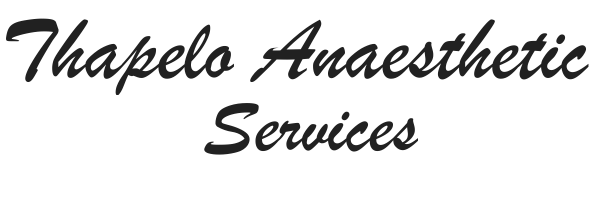Anaesthesia Billing
Please take careful note of the following information regarding billing and anaesthesia accounts. Anaesthetic accounts can appear very confusing when you receive one. This will attempt to clarify how they are formulated

An anaesthetic account is made up of 4 parts consisting of time factors and risk modifiers:
Preoperative Preparation
The preoperative preparation (which may be called premed or pre-op assessment in your account). This is a basic consultation of less than 10 minutes and the preparation of the anaesthetic part of the theatre (preparing drugs, checking equipment and monitors). This can take the anaesthetist up to 30 minutes and this fee covers this time.
Type and Complexity Of The Operation
The type and complexity of the operation. This is a modifier for the surgical complexity. The complexity of an anaesthetic for a fractured radius is less than that of a fractured hip or open heart surgery and is charged as such.
Anaesthetic time
Anaesthetic time. You are charged for every minute that you are under the care of the anaesthetist. This is because your anaesthetist is monitoring you continuously throughout the procedure.
Other modifiers
Additional procedures performed, techniques and risks are charged for, depending on the patient’s health status or type of operation. These risk modifiers include obesity (Body Mass Index >35kg/m2), bone and joint surgery, very young (<1yr) or old (>70yrs) patients, ICU admission, pain control procedures, strange operating positions and deliberate control of blood pressure. An emergency procedure will incur a charge for a set of emergency modifiers as this increases the risks and skills needed to perform the anaesthetic.
All the time and risk modifiers are allocated specific unit values and each unit is then given a Pula value. These values are added together to determine the final anaesthetic cost.
Per the Competition Commission ruling of 2004, the anaesthetist in the Thapelo Anaesthetic Practice has to determine his fees and rates independently. Likewise, every medical aid determines the rate at which they are prepared to re-imburse practitioners. The concept of a “medical aid rate” no longer exists
Your medical aid pays you out at the rate they unilaterally determine according to the plan you take with them which may be vastly different to the rate determined by the anaesthetist. Be aware that your medical aid/funder may call this “the 100% rate” but this refers ONLY to their rates.
Additionally, every anaesthetic account has to include VAT as the government decided that healthcare is a value added item and they have added 12% to each account.
Get a Detailed Quotation
The following are important points to note about the quotation:
It is impossible to predict how long a procedure will take, this makes estimating the cost of an anaesthetic extremely difficult. An estimated quote is therefore based on the average time taken for a procedure and assumes the procedure is of average complexity.
If the procedure takes longer than the estimated time the cost will increase according to the duration of the procedure.
It is the responsibility of you as the patient to find out from your medical funder how much of the account they will pay.
